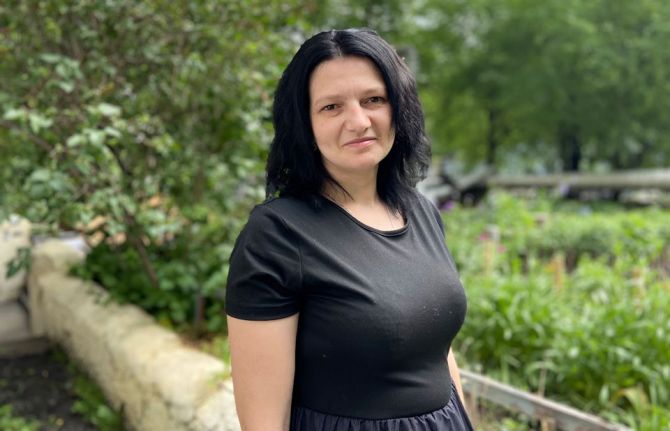
Feature Story
OPINION: Silence on harm reduction not an option
11 March 2009
11 March 2009 11 March 2009
Today of the estimated 16 million people world wide who inject drugs—3 million are HIV positive. Any discussion on drugs cannot ignore their needs and human rights.
Credit: UNAIDS
In 1998, the UN General Assembly held a Special Session on the world drug problem. At the time there was little discussion on the linkage between HIV and drugs. Today of the estimated 16 million people world wide who inject drugs—3 million are HIV positive. Any discussion on drugs cannot ignore their needs and human rights.
Over the years the issue of HIV and drug use (especially injecting drug use) has grown. However, the global response has not followed the scientific evidence and harm reduction has been largely excluded.
Harm reduction programmes include access to sterile injecting equipment, opioid substitution therapies, condoms, STI treatment, information on sexual transmission of HIV and community-based outreach. These are the most cost effective means of reducing HIV related risk behaviors. They not only prevent transmission of HIV but also of hepatitis C and other blood borne viruses.
The word “only” hasn’t worked for HIV prevention, treatment, care and support programmes. And the evidence shows that programmes that “only” focus on one area of drug use will not work either.
Too often countries have taken the one dimensional approach of reducing drug demand or supply. The word “only” hasn’t worked for HIV prevention, treatment, care and support programmes. And the evidence shows that programmes that “only” focus on one area of drug use will not work either.
Countries that have adopted a comprehensive approach to HIV and drug use have seen a slowing and reversal in the spread of HIV among people who inject drugs. This includes countries such as Australia, UK, France, Italy, Spain, and Brazil, and in some cities in Bangladesh, the Russian Federation, and Ukraine. In recent years countries such as Indonesia and China are scaling up access to harm reduction programmes for injecting drug users.
No evidence has been found of unintended negative consequences such as increased initiation, duration or frequency of injecting drug use. On the contrary it has been found that countries which have adopted this public health approach to HIV prevention among people who inject drugs have been the most successful in reversing the HIV epidemic.
In contrast to the overwhelmingly beneficial effects of harm reduction, law enforcement approaches alone do little to reduce drug use and drug-related crime and are often associated with serious human rights abuses and poor health outcomes for people who use drugs. They include arbitrary arrests, prolonged detention, compulsory drug registration and unwarranted use of force and harassment by law enforcement officers. Drug laws may make possessing and distributing sterile needles and syringes an offence, and opioid substitutes may be classified as illegal, despite both methadone and buprenorphine being on the WHO model list of essential medicines.
It should not be a crime to access clean needles. It should not be a crime to access substitution therapy.
These measures reinforce stigma against people who inject drugs, create disincentives to accessing services (including treatment for drug dependence or HIV) and may make health and welfare professionals wary of offering services to people who use drugs. But when law enforcement and public health efforts come together, the outcomes are very successful– for example in Britain and Australia where drug action teams police focus on the crime fighting and successfully refer drug users to health and welfare services. It is time to come together, not work against each other.
It should not be a crime to access clean needles. It should not be a crime to access substitution therapy. The global drug problem is complex and cannot be solved in isolation. A coming together of organizations working on drug control and AIDS is urgently needed. Working together the world has a better chance to employ solutions that save lives.
The largest numbers of HIV positive people who inject drugs are in Eastern Europe, East and Southeast Asia and Latin America. HIV prevalence among some groups in these regions is estimated at over 40%. New epidemics of injecting drug use are also emerging in sub-Saharan Africa. HIV can spread extremely quickly once it enters a population of people who inject drugs. Increases in HIV prevalence from 5% to 50% in one year have been observed among people who inject drugs in some settings, and HIV can also spread from people who inject drugs to their sexual partners and other populations at higher risk of HIV exposure.
Right Hand Content
Cosponsors:
Press centre:
High Commissioner calls for focus on human rights and harm reduction in international drug policy (10 March 2009)
Feature stories:
51st session of the Commission on Narcotic Drugs (11 March 2008)
Reducing drug related harm (14 May 2007)
Injecting drug use: focused HIV prevention works (11 May 2007)
Harm reduction to be scaled up in Ukraine (11 April 2007)
Increased HIV services for drug users needed (14 November 2006)
External links:
The Commission on Narcotic Drugs (CND)
Statements:
Publications:
Best Practice Publication: High Coverage Sites—HIV Prevention among Injecting Drug Users IDU in Transitional and Developing Countries ( En | Fr | Es | Ru )



